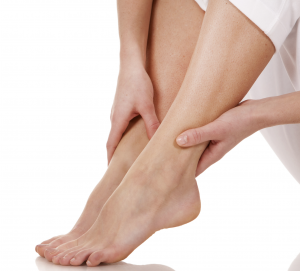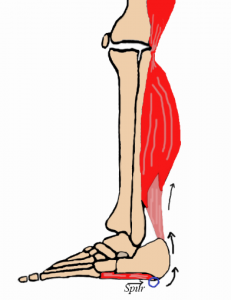 During a recent conversation I was affected by a comment a woman made regarding her friend with foot pain–Pitifully, she said, “She’s got that plantar fasciitis and so she’s resting until it gets better-” She spoke with an aire of deep concern as if her friend had caught a bad cold or contracted the measles. I asked if she knew what plantar fasciitis was, and she understood it involved pain in the feet, but couldn’t elaborate on it further which gave me the opening to explain what I know about this common foot disorder. And so in the words that follow I will try to simplify how one “comes-down-with” plantar fasciitis.
During a recent conversation I was affected by a comment a woman made regarding her friend with foot pain–Pitifully, she said, “She’s got that plantar fasciitis and so she’s resting until it gets better-” She spoke with an aire of deep concern as if her friend had caught a bad cold or contracted the measles. I asked if she knew what plantar fasciitis was, and she understood it involved pain in the feet, but couldn’t elaborate on it further which gave me the opening to explain what I know about this common foot disorder. And so in the words that follow I will try to simplify how one “comes-down-with” plantar fasciitis.
Plantar fasciitis means inflammation of the fascia layer on the sole of the foot and is often born from a state of very confused muscles in the lower leg. It’s explanation can be complicated because many people who have been diagnosed with plantar fasciitis experience various symptoms ranging from pain on the bottom of the heel, pain on either side of the heel, and arch pain, summing up all of the above to its common denominator–foot pain.
Let’s evaluate the onset of these types of foot pain.
Symptoms:
The first real sign of the development of plantar fasciitis is tight calf muscles and/or tension in the heel as it is placed on the floor-especially after getting out of bed in the morning. Initially the symptoms are ignored because as the day progresses, the pain seems to subside. Signs of a worsening condition is when heel pain becomes more active throughout the day, but this too is often shrugged off because one realizes movement helps the pain go away. The last straw comes when pain in the heel becomes constant and unbearable with weight, and one hobbles to get from here to there. This is the state when the calcaneus has become displaced and inflamed-causing symptoms of plantar fasciitis.

Side view of the left leg
Here’s the problem:
The calf muscles, (the gastrocnemius and soleus) which attach to the back of the heel bone (calcaneus) via the Achilles tendon, are overpowering the foot and begin to pull the back of the heel upward. This jeopardizes the bony protrusion (bone spurs) on the bottom of the heel that serve as an attachment site for the plantar fascia and other intrinsic foot muscles, and they too begin to strain from this pulling effect, and become overly stretched. Under normal conditions the connective tissue on the bottom of the feet are very resilient and can withstand a tremendous amount of weight, however, walking with the burden of increasing strain wears on the fibers of the fascia and they begin to inflame and tear– and subsequently, the 13 muscles that would normally move the foot get confused and seize from their normal function of propelling and balancing the foot.

In his book, Fundamentals of Foot Function, Dr John Martin Hiss, DO, showed x-rays of both feet of the same individual–one foot with severe heel pain and the other without. In many cases he found that the bone spurs were similar in appearance in both the affected foot and the foot without pain. He concluded, that the pain ones feels in the heel when walking is not necessarily from the bone spur one often sees on an x-ray, but from excessive tension at the site where fascia and tendon meet the bone spur. For this reason, he believed removing the spur surgically would not necessarily correct the problem but create others.
Cure and prevention:
What’s most important to know about all conditions causing foot pain is why this happens, because then one can be more pro-active in relieving painful symptoms and keep foot pain away. Shoes that do not fit is the main cause of excessively tight calf muscles causing plantar fasciitis, or inappropriate weight bearing caused by certain shoes.
***Get your feet measured correctly. In the many years of working with foot problems, I have found most people are wearing shoes that are too small. For men, its usually the size (sometimes up to 3 sizes too small), and for women it’s often both size and style that creates the problem– and this is what inhibits the calf muscles to perform with their full potential. Wearing the correct size and style of shoe is a simple way to remedy foot problems because they give the calf muscles room to relax while they propel the feet.
(click here to read: Tips to prevent foot pain to learn how to measure feet and for exercises to relieve foot pain)
Feet photograph used with permission from Dreamstime.
Archives
- October 2024
- December 2023
- October 2023
- March 2022
- July 2021
- August 2020
- May 2020
- April 2020
- February 2020
- January 2020
- December 2019
- November 2019
- October 2019
- August 2019
- June 2019
- May 2019
- April 2019
- January 2019
- December 2018
- October 2018
- September 2018
- July 2018
- June 2018
- April 2018
- February 2018
- December 2017
- November 2017
- October 2017
- September 2017
- August 2017
- July 2017
- June 2017
- May 2017
- April 2017
- February 2017



One Response to Plantar fasciitis simplified